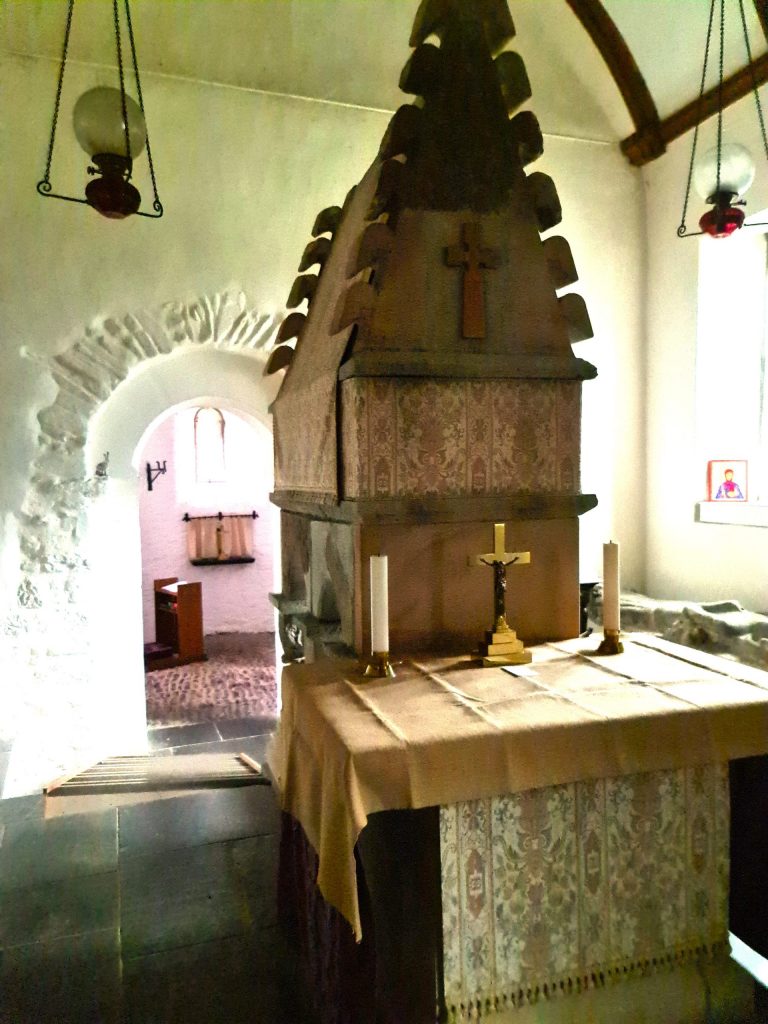
It is said that St Melangell was the daughter of an Irish king of the 6th century. Her father decided that he would marry her to a nobleman of his court. But the princess had vowed herself to a life of celibacy and prayer. She fled from her father’s kingdom and took refuge in this remote valley in the North of Wales at Pennant Melangell, where she lived for fifteen years without seeing the face of a man.
Brochwel Yscythrog, the Prince of the Kingdom of Powys, was one day hunting for hares, and pursued a hare until he came to a dense wood. He was surprised to find a virgin there of exceptional beauty, who was engaged in deep devotion and prayer, while the hare he had been chasing was safe under her robe. This holy woman boldly faced down the dogs, who retired to a distance howling, even though all the efforts of the prince and his friends could not make them seize their prey. When the huntsman tried to blow his horn, it stuck fast to his lips.
Prince Brochwel heard her story, and gave to God and her a gift of the land round about her place of prayer, to be a sanctuary for any who fled there. He asked her to found an convent there. This she did, and died the abbess of a small community after many years. She was buried in the church, at the place called Pennant, named after her by the addition of her name, Melangell.
Her hard rock bed where she lived is found in the cleft of a neighbouring rocky outcrop. Her tomb is in a little chapel, or oratory, joined to the church. This room is still called ‘Cell-y-bedd’ or the Cell of the Grave. Under the rock slab that marks her grave, a lead box was found to contain her relics. The shrine of the saint was destroyed in the Protestant upheaval but has been reconstructed from the broken parts found around the church, and her remains returned to the shrine where they are venerated today.
Until recent times no-one dared to harm or kill a hare anywhere in this valley as they were considered to remain under the protection of St Melangell. She departed in c. AD 590 and is one of the few saints of the British Isles whose remains are still found where they lived, and prayed, and were buried.
May the prayers of St Melangell be with us all.
